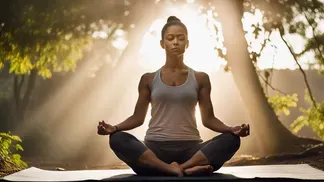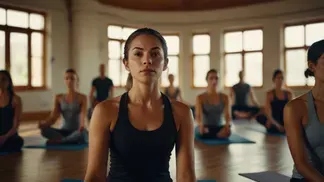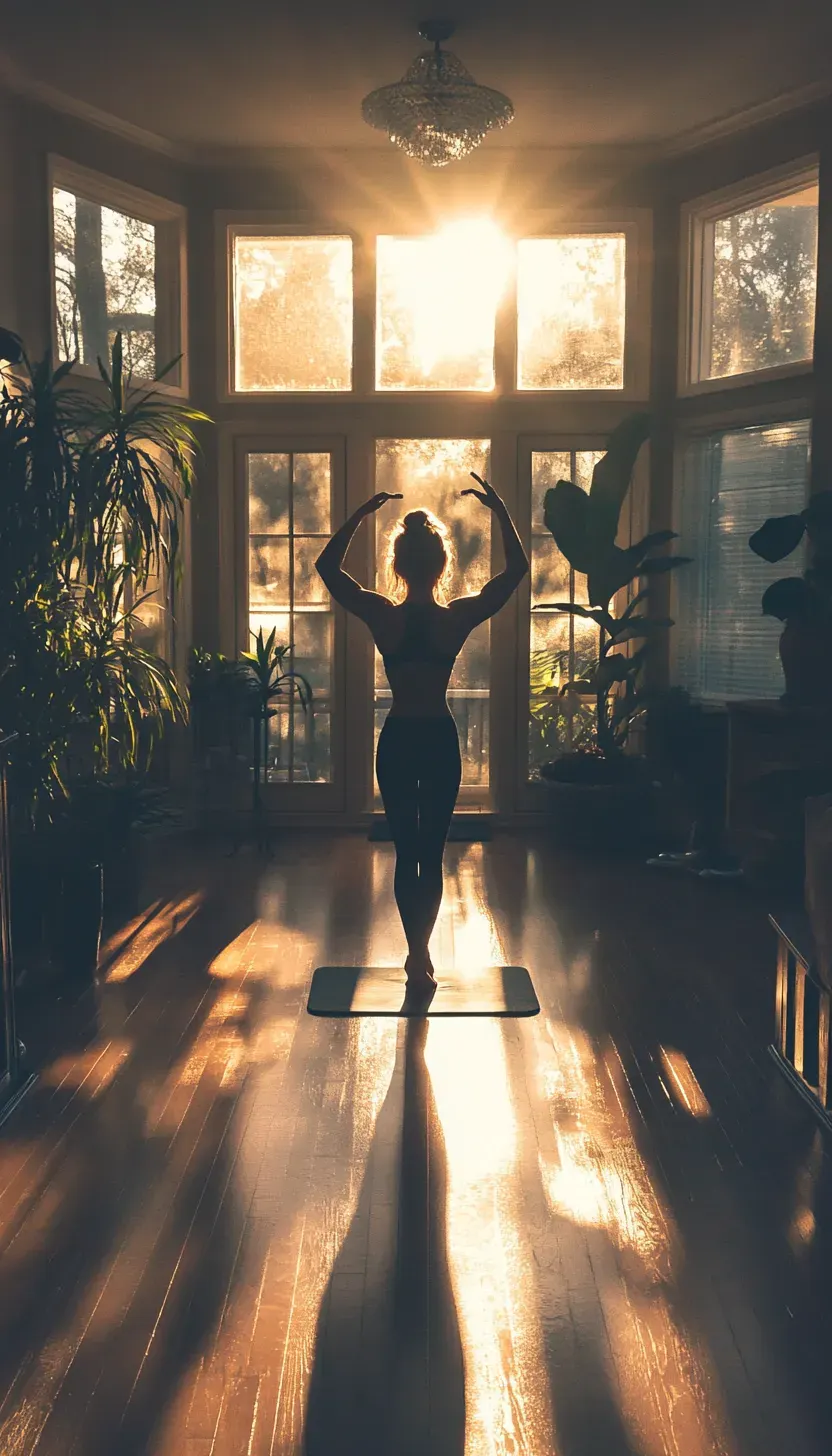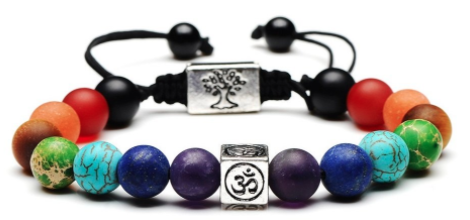Is Vinyasa Flow Hot? Understanding The Heat In Your Yoga Practice
Table of Contents
- What is Vinyasa Flow?
- Is Vinyasa Flow Typically Hot?
- Differences Between Vinyasa Flow and Hot Vinyasa
- Benefits of Practicing Vinyasa Flow
- The Benefits of Hot Vinyasa
- Who Should Try Hot Vinyasa?
- Who Should Avoid Hot Vinyasa?
- How to Prepare for a Hot Vinyasa Class
- Conclusion
When it comes to yoga, many practitioners wonder, “Is Vinyasa Flow hot?” This question often arises as people explore different styles of yoga and their associated environments.
In this article, we will break down what Vinyasa Flow is, whether it can be practiced in a heated setting, and the benefits of both hot and regular Vinyasa Flow classes.
What is Vinyasa Flow?

Vinyasa Flow is a dynamic style of yoga that emphasizes fluid movement and breath. The term “Vinyasa” translates to “breath-synchronized movement.” In a Vinyasa class, you will flow from one pose to another, coordinating your movements with your inhalations and exhalations.
This creates a seamless transition between postures and generates a meditative state.
Is Vinyasa Flow Typically Hot?
To answer the question directly, Vinyasa Flow itself is not inherently hot. However, many studios offer heated Vinyasa classes, often referred to as “Hot Vinyasa.”
These classes are typically set in rooms heated to temperatures ranging from 85°F to 105°F (29°C to 40°C). The heat can enhance flexibility and detoxification, making it appealing to many practitioners.
Differences Between Vinyasa Flow and Hot Vinyasa

Temperature: Regular Vinyasa classes are usually conducted in a comfortable room temperature, while Hot Vinyasa takes place in a heated environment.
Benefits: Hot Vinyasa can help increase circulation and flexibility, while regular Vinyasa focuses on strength and endurance without the added heat.
Intensity: Some find Hot Vinyasa to be more intense due to the heat, which can lead to quicker fatigue.
Benefits of Practicing Vinyasa Flow
Both heated and non-heated Vinyasa Flow classes come with a variety of benefits:
Improved Flexibility: The dynamic movements help increase flexibility and range of motion.
Increased Strength: Vinyasa builds strength through various postures and transitions.
Enhanced Focus: The connection between breath and movement fosters mental clarity and focus.
Stress Relief: The practice can alleviate stress and promote relaxation.
The Benefits of Hot Vinyasa
Practicing Vinyasa Flow in a heated environment offers additional benefits:
Detoxification: Sweating can help eliminate toxins from the body.
Increased Circulation: Heat can improve blood flow, enhancing overall circulation.
Greater Flexibility: The warmth allows for deeper stretches and greater flexibility.
Who Should Try Hot Vinyasa?
Hot Vinyasa can be suitable for various practitioners, but it’s essential to consider individual circumstances:
Experienced Yogis: Those who are already familiar with Vinyasa Flow may find hot classes beneficial.
Those Seeking Detoxification: If you’re looking to cleanse your body, the heat can aid in this process.
Individuals Looking for a Challenge: The intensity of a heated class may appeal to those wanting to push their limits.
Who Should Avoid Hot Vinyasa?
While Hot Vinyasa can be invigorating, it may not be suitable for everyone:
New Practitioners: Beginners may find the heat overwhelming.
Individuals with Certain Medical Conditions: Those with heat sensitivity, cardiovascular issues, or respiratory problems should consult a doctor before participating.
Pregnant Women: Pregnant individuals are generally advised to avoid hot yoga classes.
How To Prepare For A Hot Vinyasa Class
If you decide to try a Hot Vinyasa class, here are some preparation tips:
Hydrate: Drink plenty of water before and after class to stay hydrated.
Dress Appropriately: Wear lightweight, moisture-wicking clothing to keep comfortable.
Arrive Early: Give yourself time to acclimate to the heat before class begins.
Listen to Your Body: Pay attention to how you feel and take breaks as needed.
Conclusion
So, is Vinyasa Flow hot? The answer is that it can be, especially when practiced in a heated environment. Whether you choose a regular Vinyasa class or a Hot Vinyasa session, both styles promote physical and mental well-being.
By understanding the differences and benefits of each, you can make an informed decision about which class is right for you.
Regardless of the setting, Vinyasa Flow offers an excellent way to connect your breath with movement, improve your flexibility, and strengthen your body. So, find a class that suits your needs and enjoy the journey of your yoga practice.
Compare with What is Warm Vinyasa Flow? and What is Hot Vinyasa Flow?.
People Also Asked
- What is the difference between Vinyasa and Hot Yoga?
- Vinyasa focuses on fluid movements, while Hot Yoga emphasizes holding poses in a heated environment.
- How hot is a Hot Vinyasa class?
- The temperature typically ranges between 85°F to 105°F (29°C to 40°C).
- Can beginners try Hot Vinyasa?
- It’s not recommended for beginners due to the intensity and heat.
- What should I wear to a Hot Vinyasa class?
- Lightweight, moisture-wicking clothes are ideal for comfort in heated environments.
- Does Hot Vinyasa help with weight loss?
- Yes, the heat and dynamic movements can contribute to calorie burn and weight loss.
- Is Vinyasa Flow suitable for pregnant women?
- Regular Vinyasa may be suitable, but Hot Vinyasa should generally be avoided during pregnancy.
- Do I need special equipment for Hot Vinyasa?
- A non-slip yoga mat and a towel are essential for Hot Vinyasa classes.
- What are the benefits of practicing Vinyasa Flow?
- Benefits include improved flexibility, strength, focus, and stress relief.
- Can Hot Vinyasa cause dehydration?
- Yes, sweating in a heated environment can lead to dehydration if you don’t hydrate properly.
- Is Hot Vinyasa harder than regular Vinyasa?
- Many find Hot Vinyasa more challenging due to the added heat.





